DISCLOSURE: VT condemns the horrific tragedy committed by the NAZI Party against Jewish Citizens of Europe during Word War II known as the "Holocaust". VT condemns all racism, bigotry, hate speech, and violence. However, we are an open source uncensored journal and support the right of independent writers and commentors to express their voices; even if those voices are not mainstream as long as they do NOT openly call for violence. Please report any violations of comment policy to us immediately. Strong reader discretion is advised.
 “Live not by lies!”—Alexander Solzhenitsyn[1]
“Live not by lies!”—Alexander Solzhenitsyn[1]
Editors Note: Dear readers, this is another fabulous article from a new VT staff writer Jonas Alexis. It is packed full of well researched and confirmed information from a variety of sources on the most complicated and misrepresented historical subject. The anchor for this piece was Hugh Thomas’ 900-page tome, The Slave Trade, 25 years in making, and 87 pages of source notes.
When discussing this topic one day with Jonas I mentioned the book and Jonas said he had read it. I knew then we’re going to see some great work from him. Save this article for your reference files as you can debate the topic with anyone with this material alone. Don’t miss Part one… The Problem of Slavery in Western Culture…
Jim W. Dean
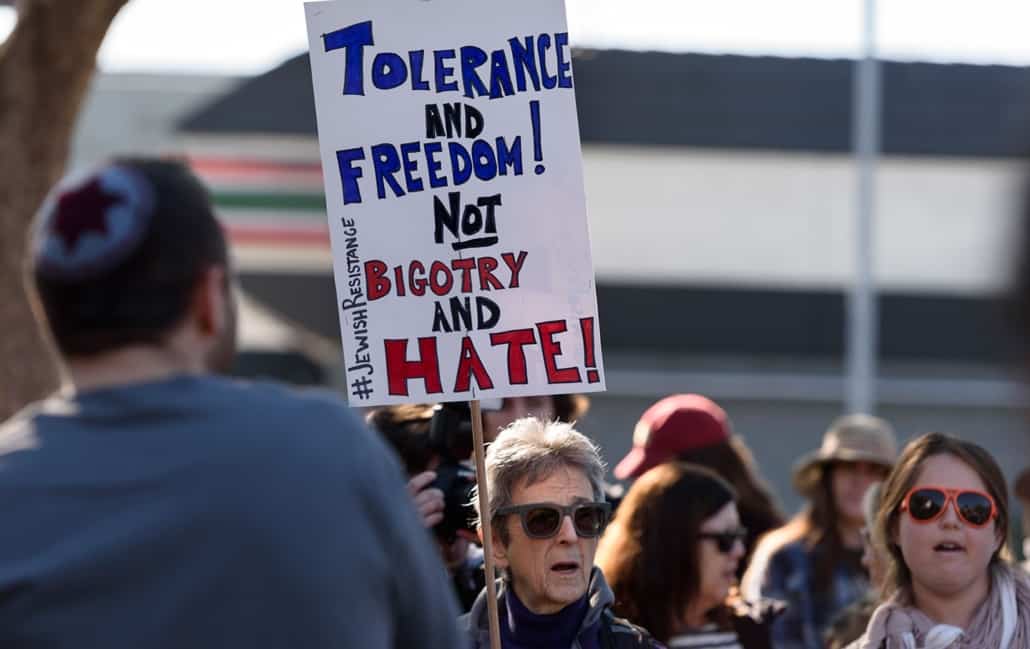
Preface: After writing the following essay, I asked a number of historians if they would be willing to read it and provide some comments. Many declined, but some were curious. I sent it to several individuals, but I never got a response from those who were interested in reading it.
I eventually asked one well-known courageous Jewish academic and prolific writer, who actually praised the essay and responded,
“[Jewish historian] Eli Faber told me that he was professionally destroyed by writing his book about Jewish participation in the slave system.”
This is not surprising since Jewish historians such as Arno J. Mayer have received similar treatment. After writing Why Did the Heavens Not Darken?, Mayer’s work was labeled “perverse,” and he was even accused of “engaging in a subtle form of Holocaust denial.”[2]
To all my Jewish brothers and friends out there: I wish to express that the following article is not intended to incite animosity toward you. I am on your side!…JA
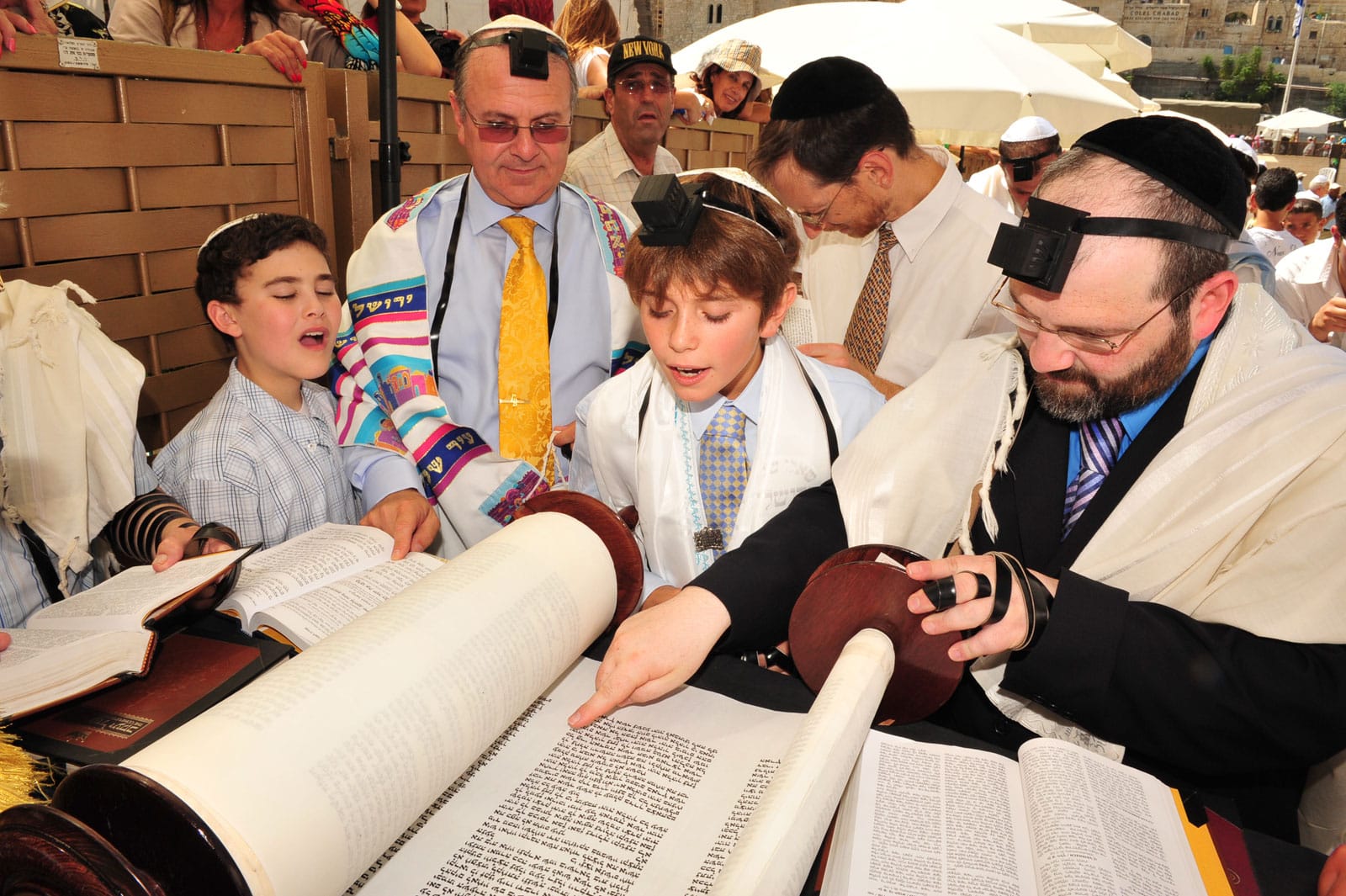
One of the greatest logicians in the last century is arguably Mortimer Adler, a prolific philosophical writer who served as chair of the board of editors of the Encyclopedia Britannica, and he happens to be one of this columnist’s favorite writers.[3]
Adler eventually became a Christian at the end of his life. Many more could be cited here, but time constraints.
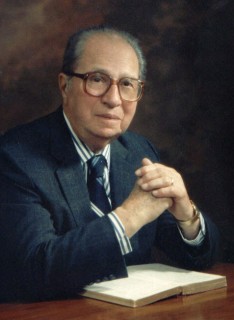
The following article was written primarily on the basis of historical accounts and the search for the truth.
From a geopolitical perspective, Alan Hart is right in pointing out that Zionism is the real enemy of the Jews, and I would add that it is the enemy of all mankind.
From a theological perspective, rejecting Logos has metaphysical implications, and those implications have historical and detrimental consequences.
We simply cannot afford to by-pass those consequences any longer. Now let us move on to the subject.
Despite the fact that slavery existed for millennia in every continent, popular opinion lays the blame for black slavery at the feet of Western civilization in general with little effort devoted to proving this theory with historical documentation.
Yet popular historians never care to tell us that a major factor in the continuance of the slave trade, from Roman times to the Civil War, was the involvement of Jewish businessmen. Jewish writer Chaim Bermant declared back in 1977 that “It was the London Rothschilds who found the [20 million pounds] to compensate slave owners after the abolition of slavery in the British Empire in 1833. In 1854 a [16 million pound] loan to finance the Crimean War was launched through the House of Rothschild, and in 1871 they raised [100 million pounds] to help France pay her war indemnity to Prussia.”
Moreover, it is well established by the historical data that Jews played a significant role in the slave trade in the ancient Roman world,[5] and this painful chapter in human history has been acknowledged even by those who try to minimize the role Jews played in both ancient and modern slavery.[6]
Historian Jonathan Schorsch declares that many scholars try to dismiss or minimize this fact, but the evidence is quite clear. Schorsch himself maintains that the Jewish participation was at a minimal level.[7]
In the sixth century, Italy, the slave trade was quite profitable, and once again it was not without Jewish profiteers; in Spain for example, Jews more often than not garnered their wealth through the slave trade.[8]
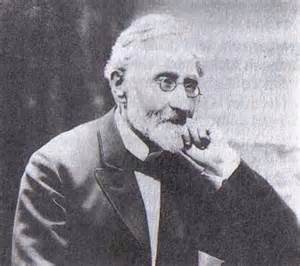
Heinrich Graetz, arguably the father of modern Jewish historiography, writes that a sizeable portion of the Jews’ wealth around the 900s came from the transportation of slaves.[9] Graetz notes that even in the 700s, the Jews turned their attention to the slave trade.[10]
Historian Israel Abrahams agreed with Graetz on these accounts,[11] and historian Roberta Strauss Feuerlicht likewise concurred with these assessments.[12]
Nineteenth-century historian Henry Hart Milman notes that “We have ample evidence that one great branch of commerce fell almost entirely into the hands of the Jews—the international slave-trade.”[13]
Historian James. A. Huie declared exactly the same thing.[14] That pattern continued even during the first crusade when the slave trade became an occupation for some Jews.[15] Solomon Grayzel tells us that in the Middle Ages, “Jews were among the most important slave-dealers” to bring slaves from other places and sell them “to Christian and Mohammedan masters.”[16]
Even during the Ottoman Empire, Jews “took an active part” in the slave trade, owning Muslim slaves.[17]
Historians Albert S. Lindemann and Murray Friedman write that a small number of Jews were involved in the slave trade in the modern world,[18] but other historians such as Jacob Rader Marcus and Marc Lee Raphael declare that the number of Jews who were involved in the slave trade in the modern world was more than significant.[19]
Raphael goes so far as to say that “in all the American colonies, whether French (Martinique), British or Dutch, Jewish merchants frequently dominated.”[20]
In a similar vein, Jewish historian Arnold Wiznitzer declares that by the middle of the seventeenth century in Brazil Jews “dominated the slave trade.”[21] They dominated the trade because Jews were always in the minority, and Jewish slave traders were “entirely out of proportion to their numbers.”[22] There were indeed a number of professing Christians who were trying to justify human slavery on a number of Biblical texts.
More importantly, those professing Christians were more often or not crypto-Jews or conversos who still wanted to build their heaven on earth through the slave trade and other venues. Celebrated historian John H. Elliott of Oxford declared:
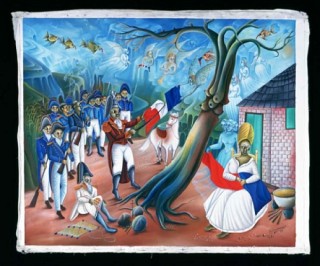
“New Christians, many of them covert Jews, had not only settled in Brazil but were also the dominant element among the Portuguese merchants who controlled the transatlantic slave trade, and they seized the opportunity offered by the union of the crowns to establish themselves in the Spanish American ports of Vera Cruz, Cartagena and Buenos Aires.
From here they infiltrated the viceroyalties of New Spain and Peru, where they became a significant presence, particularly in Lima…
“There were obvious scope for profitable commercial activity in the silver-rich viceroyalties, and for at least sixty years after 1580 they made an important contribution to Spanish American economic life, some of them simply as small traders, shopkeepers and artisans, but others as wealthy merchants.”[23]
“New Christians” were also involved in covert vices, such as “buying public offices, which they made use of so arrogantly that the Old Christians would not put up with it,” as one converso Diego de Valera put it.[24]
In 1492, Jews were expelled from Spain. Because of their covert activity, most particularly with respect to rapacious usury, they were given the choice of converting to Christianity or facing deportation. Many Jews, in order to remain in the land, became the “New Christians.”[25] A “New Christian” is simply a person who was “secretly professing the Jewish faith and not a sincere Christian.”[26]
There were however exceptions to this. Other “New Christians” seemed to have made a genuine move from Judaism to Christianity. People like Bartolome de las Casas appeared to have been sincere.[27]
He eventually wrote a brilliant piece of work defending the Indians.[28] Some “New Christians” followed their tradition covertly, and some did not. This was a complex issue.[29]
There is enough evidence to show that there were enough “New Christians” who simply wanted to follow their old tradition. Historian Edward Kritzler writes that these people were also called “Esparandos, Hopeful Ones, who expected that the Messiah would soon come and that He, like them, would appear in the guise of a Christian and so forgive their apostasy.”[30]
More importantly, “As long as they pretended to be Christians and delivered the goods, no one questioned their religiosity too closely.”[31]
Many of those “New Christians” and the Sephardic Jews “found attractive opportunities in the trade and the cultivation of sugar. Their international network connections and strategic position in core areas of the sugar market in the commerce of Northern Europe and the Iberian Peninsula gave Sephardic Jews and New Christians an edge over their competitors.”[32]
Historian Dean Philip Bell declares that “They were engaged in all aspects of colonial trade.”[33] Schorsch writes that “slavery owning by elite Conversos in Spain and Portugal should not be underestimated, though of course, these owners had obtained the privilege as Christians.”[34]
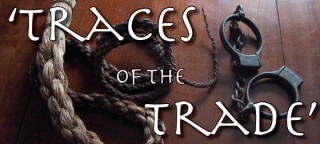
Crypto-Jews and New Christians existed in colonial Peru, Chile, Brazil, Portugal, Spain, etc. In 1636 in Recife, Brazil, Jews were making inroads in professions such as the sugar industry, tax farming, the slave trade, among other things.[35]
The estimation is that “by 1645 half of the 1,500 Europeans living in Dutch Brazil were Jews.”[36]
In order to be successful in the trade, many began smuggling illegally. Historian Adam Sutcliffe commented that “the early modern Sephardim were exemplary non-patriots, sustaining international commerce as well as their own complex cultural networks and identities, precisely because they remained aloof from theological divisions and political rivalries.”[37]
Many historians make no distinction between those “New Christians” and genuine ones and blended them together as if they were the same.[38] But historians at least agree that there were indeed distinctions between those two.[39]
Yet in a book edited by Israeli historian Haim Hillel Ben-Sasson, the blame for the slave trade is largely laid at the feet of Christians! Ben-Sasson did not hesitate to write that the pagan Slavs were captured by Christians and sold to Jews who eventually “transported them to Islamic lands.”[40]
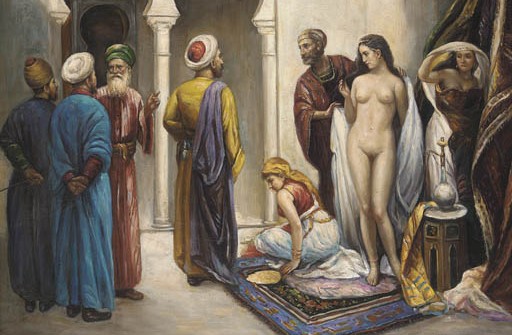
Ignoring all the historical evidence that anti-slavery attitudes and movements have existed throughout Christian Europe, as we shall see in the next two articles, Ben-Sasson tells us that “the servitude of Christians to other Christians constituted the warp and woof of feudal Christian society.”[41]
Picking and choosing historical instances that best support his ideological hermeneutics, Ben-Sasson did not feel it necessary to tell us of the largely disproportionate number of Jews who were involved in the slave trade at all.
Eli Faber, who believes that the number of Jews who participated in the slave trade was small, writes that some Jews—primarily the “New Christians”—actually practiced Judaism secretly and professed to be Christians outwardly.[42] This of course intensified the spirit of anti-Jewish behaviors, and again they were hated for such activities.
Elliott declares that “they were disliked and distrusted in the Spanish territories, where opinion hardened against them in the 1620s and 1630s.” They were eventually viewed as traitors and usurpers and were eventually persecuted even in places such as Mexico, “where thirteen of them were burnt at the stake, and twenty-nine abjured.”[43]
Historian Cecil Roth, who writes page after page in The History of Marranos that Jews were persecuted but doesn’t give an explanation why, declares that from 1690 until 1722, Jews were known to be “the greatest slave-holders” in Surinam.[44] Raphael makes similar assertions.[45] Just one decade after they set their feet in Curacao, they “owned 80 percent” of the plantations there.[46]
Keep also in mind that the Jewish population has never exceeded five percent of any society they lived in. Because of this, many Jewish communities increased in wealth, from the seventeenth century up to the eighteenth century, in the Dutch West Indies, in Brazil, in Portugues, in Barbados, etc.[47]
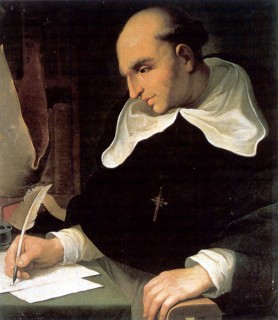
Moreover, slave trading Jews such as Isaac Da Costa of Charleston, David Franks of Philadelphia, Aaron Lopez of Newport, became increasingly wealthy.[48]
And by 1889, with the increasing number of “traders, brokers, bookkeepers, clerks, collectors, petty merchants, retailers, wholesalers,” Raphael tells us that “two-thirds of all the Jewish families in the United States had at least one servant!
Jews had clearly achieved a comfortable position in American society.”[49]
It was for a similar reason that historian William Thomas Walsh declared that Jews “had profited hugely on the sale of fellow-beings as slaves, and practiced usury as a matter of course, and flagrantly.”[50]
As such, “they would force Christian servants to be circumcised…and urged their debtors, sometimes, to abjure Christ. Again, Moses had condemned blasphemers to death.
Yet it was a custom of many Jews to blaspheme the Prophet for whom Moses had warned them to prepare.”[51]
Blacklisted by Popular Historians
Lindemann wrote that the fact that a number of Jews were involved in the slave trade is even ignored by prominent Jewish historians such as Oscar Handlin, “while mentioning by naming the ‘great Jewish merchants,’ who made fortunes in the slave trade.”[52]
Jewish historian Roberta Strauss Feuerlicht noted the same thing, that “The Jew as a beneficiary of slavery is rarely mentioned by Jewish historians.”[53]
Influential Jewish historian Simon M. Dubnow wrote a two-volume work on the history of the Jewish people, and Jewish participation in the slave trade is not even mentioned, although he talks about slavery frequently.[54]
Herbert S. Klein also avoids any mention of this issue in his study The Atlantic Slave Trade.
Instead, Klein declares, “While the arguments against the slave trade may have had a moral origin, they were also based on the interests of European workers and capitalists and not on any concern with the African slaves themselves. The institution and its trade might be unacceptable, but at least in the English campaign it was not fought in the name of equality for blacks.”[55]
Yet on the very next page, Klein cites “90,000 English-speaking Quakers” who began to revolt against the slave trade in the 1770s. A decade later, other Christian groups such as the Methodists and Protestants joined in the fight.[56]
Other historians of various stripes also tend to dismiss the issue altogether or discussed it briefly as if it is unimportant and unnecessary.
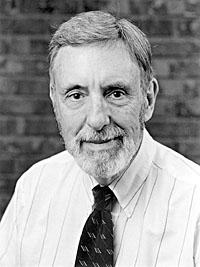
David Brion Davis, one of the leading authorities on the history of slavery in the Western World, does not even address this particular issue in his widely read study The Problem of Slavery in Western Culture,[57] and only made passing references to Jewish law in the Old Testament and other things in his study The Problem of Slavery in the Age of Revolution.[58]
This is not uncommon for Davis to dismiss the evidence and to pursue ideological purposes.[59] Other noted historians such as Ira Berlin, Kenneth Morgan, Stephanie E. Smallwood, do not mention this at all.[60] This has been a consistent pattern among many other historians.[61]
Historian Patrick Manning of the University of Pittsburgh concludes his book Slavery and African Life by saying, “For the case of African slaves, in turn, one may argue that the response to their sacrifice is to honor their memory and thereby ensure that no such sacrifice will be made again.”[62]
The sad part is that throughout the entire book Manning never discusses Jewish participation in the slave trades. Manning has an entire chapter entitled “The End of Slavery,” but he never mentions the influence of Christianity in abolishing the slave trade.
Eugene D. Genovese, a widely read scholar of slavery in the South, also avoids mentioning either fact.[63]
Historian Bernard Bailyn slightly makes reference to a “close-woven network of enterprising Sephardic Jews with connections throughout the Atlantic world” in the eighteenth century in South America which constituted the “inner core” Atlantic trade.[64]
Historian Thomas Benjamin, for example, mentions that Surinam attracted, among other groups, a number of English Jews in the 1600s, stating that
“The formation of Brazil in the early and mid-sixteenth century depended upon the partnerships of Portuguese men and native women. The first Portuguese colonizers, for the most part, were outcasts and castaways, degredados, shipwrecked sailors, crypto-Jews, and other textiles”; that “Jews became some of the sugar planting elite in Pernambuco,” Brazil, but that “the majority of colonists were seeking opportunity and wealth…”[65]
But Benjamin never discussed the Jewish connection to the slave trade. We see a similar methodology in the writing of Barbara L. Solow.[66]
Some historians perhaps dismiss this body of scholarship ignorantly,[67] others do not. To those who have intentionally ignored, it demonstrates both cowardice and misapplication of actual historical tragedies which should never be repeated.
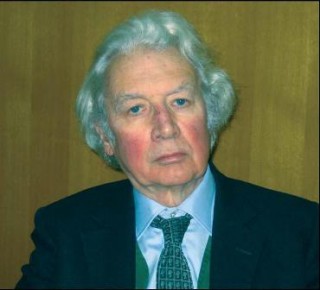
In his study of the Atlantic slave trade, historian Hugh Thomas for example only cites two Jews “known to me” as slave traders in the Anglo-Saxon traffic.[68]
Thomas is not a bad historian. But here he is willingly ignorant, for one cannot escape names such as Aaron Lopez, Jacob R. Rivera, Isaac Elizer, Samuel Moses, Simon the Jew, Nathan Simon, Franks, Pacheco, Gomez, Levy, The Davis family of Petersburg and Richmond, Manuel Jacob Monsanto of New Orleans, Solomon Cohen of Atlanta, B. Mordecai of Charleston, J. F. Moses of Lumpkin, Georgia, Abraham Smith, among others, all of whom “made their living from the Trade.”[69]
Jewish historian Roberta Strauss Feuerlicht for example talked about “a disproportionately large number of Jews” as “slave owners” and “a disproportionately large number of Jewish merchants sold slaves as they would any other goods. Several of these merchants were prominent in their communities: an acting rabbi, the president of a congregation.”[70]
Jacob R. Rivera was the fourth leading slave owner in New Port, Rhode Island; Lopez was the wealthiest and “the most prominent slave trader in the city that dominated the business in British North America.”[71]
James A. Rawley, who does not discuss the Jewish slave trade extensively in The Transatlantic Slave Trade, declares that Lopez in particular “stood in the forefront of Newport slave merchants.”[72]
Historian William Pencat notes that Lopez was not the only Newport Jews to invest in the slave trade; Isaac and Moses Elizer, Naphtali Hart Jr., Moses Levy, had their own slave ships.
Pencat however believed that Newport Jews were considered to be a small part of the trade and declared that “The canard that the slave trade was primarily Jewish is a lie fostered by the anti-Semitic Nation of Islam.”[73]
The issue of ideology supplanting historical truth among historians is clearly illustrated in a 1978 University of Chicago lecture given by the noted historian John Hope Franklin about Jewish communities in the nineteenth century, focusing on the southern part of the United States.
One of the questions addressed to Franklin at the end of his lecture revolved around Jewish participation in the slave trade. Franklin declared that he did not know much about the issue and therefore could not comment.
Jewish historian Ralph A. Austen, who had attended, commented later:
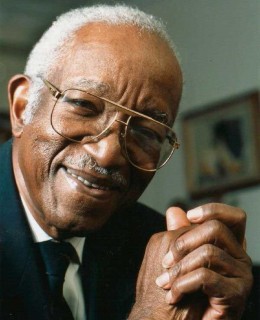
“John Hope Franklin and I were both aware that Sephardic Jews in the New World had been heavily involved in the African slave trade.
Why did two professional historians in a university setting hesitate to provide our colleagues with such an important piece of information?
I cannot answer for Franklin but I, as a Jew sitting in a Jewish institution that was entertaining an African-American guest, felt that pointing out the role of Jews in the history of Black slavery would, in this context, have constituted something of a betrayal.
“I did not want to undermine the sense of solidarity between the two communities which had been reinforced by Franklin’s very presence, as well as through his references to our confrontation with white Gentile Southern bigots.
Franklin and I were condoning a benign historical myth: that the shared liberal agenda of twentieth-century Blacks and Jews has a pedigree going back through the entire remembered past.”[74]
While Franklin consciously hides the truth, he irrationally blames Christianity for the slave trade:
“It was a strange religion, this Christianity, which taught equality and brotherhood and at the same time introduced on a large scale the practice of tearing people from their homes and transporting them to a distant land to become slaves.”[75]
In his widely read textbook From Slavery to Freedom, Franklin ignores the true role Christians played in abolishing slavery and makes vague references to some Christians who opposed it.
He is not the only one to do so. While laying the blame of the Atlantic slave trade on European Christians in general and Protestantism in particular, historian Carla Gardina Pestana does not even find it relevant to discuss the preponderance of Jews who were in the slave trade.[76]
On one level, it is perhaps understandable why those historians dismiss the subject of Jewish participation in the slave trade, for the connotations to anti-Semitism are strong, thanks to a work the radical black group Nation of Islam published a few years ago. In the book, entitled The Secret Relationship between Blacks and Jews, they charged Jews with having a major hand in slavery.
To avoid being classed as an ally of this radical group, many historians quickly down-played any Jewish involvement. David Brion Davis implied that it was simply an accident that a small number of Jews happened to participate in the slave trade.[77]
Ralph Austen stated that although serious students of history knew that Jews had indeed played a major part in the slave trade, scholars like himself did not want the truth to be known outside of scholarly literature.[78]
Austen writes, “the anti-Semitic character of The Secret Relationship emerges not from its substantive content—which seems fairly accurate—or even the aurora of conspiracy conveyed by its title.”[79] What bothers Austen is that the book portrays Jews as a “uniquely greedy and untrustworthy population.”[80]
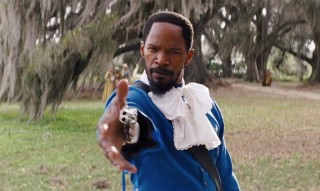
Django Unchained vs. Historical Truth
Thus far, we have seen that the issue of slavery is not as black and white as many Hollywood movies have tried to portray for years.
More recently, Django Unchained has delivered the message to multiplied millions of viewers that slavery can only be placed at the feet of ignorant European Christians—with the Bible on one hand and a whip on the other.
Jamie Foxx told the L.A. Times before the movie hit theaters worldwide:
“This actually gives us an opportunity to entertain and to educate people that are wondering what slavery is about. Young kids, black and white, but especially black kids, they don’t know about slavery today. So before the movie comes out, I hope we can talk about what happened in this country. I think we are grown enough to do it now.”[81]
Yes, we need to talk about this historically. But you cannot educate young kids when you are hiding the actual truth from them. What Foxx implicitly ends up saying is that we only have to learn about slavery through Hollywood propaganda.
We need to close all the historical accounts and watch Quentin Tarantino’s Django Unchained to be enlightened. Foxx could have had the answer to his dilemma if he simply crack-opens any serious book on the masters of the slave trade in the nineteenth century.
In the end, what Foxx calls “education” is in reality a form of manipulation. He and the Hollywood industry are brainwashing young kids and implanting deep-seated hatred in the culture toward Europeans, the very people who largely gave their lives for the abolition of slavery.
This is simply not fair and every decent individual–Jews, Muslims, atheists, agnostics, theists, etc.–must resent this madness. We all need to get in this fight against this evil which continues to rise and which seems to have no end.
READ MORE – PART III: Jewish Slavery in Western Culture
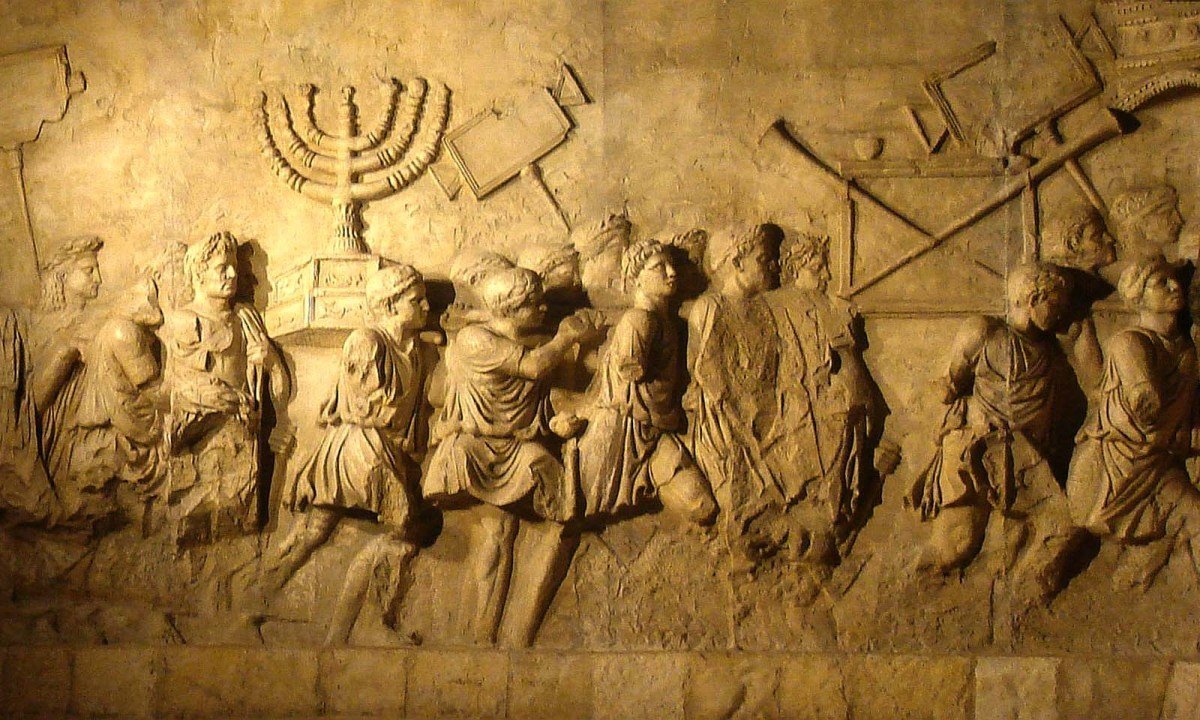
SOURCES
[1] Alexander Solzhenitsyn, The Solzhenitsyn Reader (Wilmington: ISI Books, 2006), 556.
[2] See D. D. Guttenplan, The Holocaust on Trial (New York: W. W. Norton, 2002), 73-77; Yehuda Bauer, “A Past that Will not Go Away,” Michael Berenbaum and Abraham Peck, ed., The Holocaust and History: The Known, the Unknown, the Disputed, and the Reexamined (Bloomington: Indiana University Press, 1998), 15.
[3] During my college years, I found his book very inspiring and delightful. I would highly encourage works such as Reforming Education: The Opening of the American Mind, Six Great Ideas, Ten Philosophical Mistakes, Intellect: Mind over Matter, The Difference of Man and the Difference It Makes, etc.
[4] Chaim Bermant, The Jews (New York: Times Books, 1977), 40.
[5] See for example Kevin Macdonald, Separation and Its Discontents: Toward an Evolutionary Theory of Anti-Semitism (Lincoln: 1st Books Library, 2004), chapter 3; James Parkes, The Jew in the Medieval Community: A Study of of his Political and Economic Situation (London: The Soncino Press, 1938), 17, 25, 45-46; Isaac Mendelsohn, Slavery in the Ancient Near East (New York: Oxford University Press, 1949), 99-102.
[6]One writer of this genre is Oscar Reiss, The Jews in Colonial America (North Carolina: McFarland & Company, Inc., 2000), 84-88; see also Norman Roth, Jews, Visigoths, and Muslims in Medieval Spain: Cooperation and Conflict (New York: Brill Academic Publishers, 1994), 153-162.
[7] Jonathan Schorsch, Jews and Blacks in the Early Modern World (New York: Cambridge University Press, 2004), 52-53.
[8] Israel Abrahams, Jewish Life in the Middle Ages (New York: The MacMillan Company, 1919), 98-99.
[9] Graetz, volume II, 229.
[10] Ibid., 142-143.
[11] Israel Abrahams, Jewish Life in the Middle Ages (Philadelphia: Jewish Publication Society of America, 1911), 98-99.
[12] Roberta Strauss Feuerlicht, The Fate of the Jews: A People Torn Between Israeli Power and Jewish Ethics (New York: Times Books, 1983), 39.
[13] Henry Hart Milman, History of the Jews, Volume III (London: William Clowes and Sons, 1883), 48.
[14] James. A. Huie, The History of the Jews (Boston: Dow and Jackson’s Press, 1844), 61.
[15] Graetz, volume II, 305.
[16] Grayzel, History of the Jews, 312.
[17] Schorsch, 53-54.
[18] Lindemann, Esau’s Tears, xx; Murray Friedman, What Went Wrong?: The Creation and Collapse of the Black-Jewish Alliance (New York: Free Press, 1995), chapter 1;
[19] Jacob Rader Marcus, the United States Jewry, 1776-1985 (Michigan: Wayne State University Press, 1989), 585-586; Marc Lee Raphael notes that “Slave trading was a major feature of Jewish economic life in Surinam, which as a major stopping-off point in the triangular trade. Both North American and Caribbean Jews played a key role in this commerce: records of a slave sale in 1707 reveal that the ten Jewish purchasers (10,400 guilders) spent more than 25 percent of the total funds (38,605 guilders) exchanged…Of the eighteen wealthiest Jews in the 1702 and 1707 tax lists, nine either owned a ship or had at least a share in a vessel. By 1721 a letter to the Amsterdam Jewish community claimed that ‘nearly all the navigation…was in the hands of the Jews.’” Previously, he writes that Jews “took an active part in the Dutch colonial slave trade; indeed, the bylaws of te Recife and Mauricia congregations (1648) included an imposta (Jewish tax) of five sold for each Negro slave a Brazilian Jew purchased from the West Indies Company. Slave auctions were postponed if they fell on a Jewish holiday. In Curacao in the seventeenth century, as well as in the British colonies of Barbados and Jamaica in the eighteenth century, Jewish merchants played a major role in the slave trade.” Marc Lee Raphael, Jews and Judaism in the United States: A Documentary History (New York: Behrman Hous, Inc., 1983), 14, 23.
[20] Ibid., 14.
[21] Arnold Wiznitzer, Jews in Colonial Brazil (New York: Columbia University Press, 1960), 72; see also Jonathan Schorsch, Jews and Blacks in the Early Modern World (New York: Cambridge University, 2004), 59.
[22] Lee Levinger, A History of the Jews in the United States (MD: Wildeside Press, 1952), 103.
[23] John H. Elliott, Empires of the Atlantic World: Britain and Spain in America, 1492-1830 (New Haven: Yale University Press, 2006), 214; historian John Thornton makes a slightly similar point. Thornton, 60-61; see also, Stuart B. Schwartz, Sugar Plantation in the Formation of Brazilian Society: Bahia, 1550-1835 (New York: Cambridge University Press, 1998), 266-267.
[24] Cecil Roth, quoted in E. Michael Jones, The Jewish Revolutionary Spirit, 203.
[25] Ernst Pijning, “New Christians as Sugar Cultivators and Traders in the Portuguese Atlantic, 1450-1800,” Paolo Bernardini and Norman Fiering, ed., The Jews and the Expansion of Europe to the West, 1400-1800 (New York: Berghahn, 2001), 486.
[26] Pijning, “New Christians as Sugar Cultivators,” 486.
[27] See E. Michael Jones, The Jewish Revolutionary Spirit, 203-205.
[28] Bartolome de Las Casas, In Defense of the Indians (Dekalb: Northern Illinois University Press, 1992).
[29] Bruno Feitler, “Jews and New Christians in Dutch Brazil, 1630-1654,” Richard L. Kagan & Philip D. Morgan, ed., Atlantic Diasporas: Jews, Conversos, and Crypto-Jews in the Age of Mercantilism, 1500-1800 (Baltimore: The Johns Hopkins University Press, 2009), 125-126.
[30] See for example Edward Kritzler, Jewish Pirates of te Caribbean (New York: Doubleday, 2008), viii-ix.
[31] Ibid., ix.
[32] Pijning, “New Christians as Sugar Cultivators,” 485.
[33] Dean Phillip Bell, Jews in the Early Modern World (Maryland: Rowman & Littlefield Publishers, 2008), 64-65.
[34] Jonathan Schorsch, Jews and Blacks in the Early Modern World (New York: Cambridge University Press, 2004), 52; emphasis in original.
[35] Bell, 65.
[36] Ibid., 65.
[37] Adam Sutcliffe, “Jewish History in the Age of Atlanticism,” Richard L. Kagan and Philip D. Morgand, ed., Atlantic Diasporas: Jews, Conversos, and Crypto-Jews in the Age of Mercantilism, 1500-1800 (Maryland: The Johns Hopkins University Press, 2009), 28-29.
[38] See for example Hasia Diner, The Jews of the United States: 1654-2000 (CA: The University of California Press, 2004), 26.
[39] See for example, Schwartz, Sugar Plantation in the Formation of Brazilian Society, 247-248; Ernst Pijning, “New Christians as Cultivators and Traders in the Portuguese Atlantic, 1450-1800,” 486.
[40] Haim Hillel Ben-Sasson, A History of the Jewish People (Cambridge: Harvard University Press, 1976), 397; first published in Tel Aviv.
[41] Ibid., 397.
[42] Eli Faber, Jews, Slaves, and the Slave Trade: Setting the Record Straight (New York: New York University Press, 1998), 10.
[43] Elliott, 214.
[44] Cecil Roth, The History of the Marranos (Philadelphia: The Jewish Publication Society of America, 1947), 292.
[45] Raphael, 23.
[46] Ibid., 23.
[47] Ibid., 23-25; see also Jonathan Schorsch, 59-60.
[48] Raphael, 14-15.
[49] Ibid., 17.
[50] Quoted in E. Michael Jones, The Jewish Revolutionary Spirit, 135.
[51] Jones, The Jewish Revolutionary Spirit, 135.
[52] Lindemann, Esau’s Tears, xx.
[53] Roberta Strauss Feuerlicht, The Fate of the Jews: A People Torn Between Israeli Power and Jewish Ethics (New York: Times Books, 1983), 188.
[54] Simon M. Dubnow, History of the Jews, volume I and II (NJ: Thomas Yoseloff Publishers, 1968).
[55] Herbert S. Klein, The Atlantic Slave Trade (New York: Cambridge University Press, 2010), 190.
[56] Ibid., 186.
[57] David Brion Davis, The Problem of Slavery in Western Culture (New York: Oxford University Press, 1988).
[58] David Brion Davis, The Problem of Slavery in the Age of Revolution (New York: Oxford University Press, 1999), 533-534; in a few pages here and there, Davis makes the point that some Jews were trying to justify slavery on the basis of the Old Testament, but he does not expand on the Jewish slave trade.
[59] See for example Rodney Stark, For the Glory of God, 347-349; Sowell, Race and Culture, 294.
[60] Ira Berlin, Many Thousands Gone: The First Two Centuries of Slavery in North America (MA: Harvard University Press, 1998); Kenneth Morgan, Slavery, Atlantic Trade and the British Economy, 1660-1800 (New York: Cambridge University Press, 2000); Stephanie E. Smallwood, Saltwater Slavery: A Middle Passage from Africa to American Diaspora (MA: Harvard University Press, 2007).
[61] Other books by many other historians avoid the issue altogether. See for example Joseph E. Inikori, et al., The Atlantic Slave Trade: Effects on Economies, Societies and People of Africa, the Americas, and Europe (North Carolina: Duke University Press, 1998); Jack P. Greene and Philip D. Morgan, ed., Atlantic History: A Critical Appraisal (New York: Oxford University, 2009); Dale Torston Graden, From Slavery to Freedom in Brazil: Bahia, 1835-1900 (New Mexico: The University of New Mexico Press, 2006); Eugene D. Genovese, Roll, Jordan, Roll: The World the Slave Made (New York: Vintage Books, 1976); Peter Kolchin, American Slavery: 1619-1877 (New York: Hill and Wang, 2003); John W. Blassingame, The Slave Community: Plantation Life in the Antebellum South (New York: Oxford University Press, 1979).
[62] Patrick Manning, Slavery and African Life: Occidental, Oriental, and African Slave Trades (New York: Cambridge University Press, 1990), 176.
[63] Elizabeth-Fox Genovese and Eugene D. Genovese, Slavery in White and Black: Class and Race in the Southern Slaveholders’ New World Order (New York: Cambridge University Press, 2008).
[64] Bernard Bailyn, Atlantic History: Concept and Contours (MA: Harvard University Press, 2005), 86.
[65] Thomas Benjamin, The Atlantic World: Europeans, Africans, Indians and their Shared History, 1400-1900 (New York: Cambridge University Press, 2009), 255, 449.
[66] Barbara L. Solow, ed., Slavery and the Rise of the Atlantic System (New York: Cambridge University Press, 1993), 8-9.
[67] Robert Edgar Conrad and Walter Johnson are probably on that camp. Robert Edgar Conrad, Children of God’s Fire: A Documentary History of Black Slavery in Brazil (NJ: Princeton University Press, 1984); Walter Johnson, Soul by Soul: Life Inside the Antebellum Slave Market (MA: Harvard University Press, 1999).
[68] Hugh Thomas, The Slave Trade: The Story of the Atlantic Slave Trade, 1440-1870 (New York: Simon & Schuster, 1997), 12.
[69] Reiss, Jews in Colonial America, 84-88.
[70] Feuerlicht, The Fate of the Jews, 73.
[71] William Pencak, Jews and Gentiles in Early America: 1654-1800 (MI: The University of Michigan Press, 2008), 88.
[72] James A. Rawley, The Transatlantic Slave Trade: A History (Lincoln: The University of Nebraska Press, 2005), 316.
[73] Pencak, Jews and Gentiles in Early America., 89.
[74] Ralph A. Austen, “The Uncomfortable Relationship: African Enslavement in the Common History of Blacks and Jews,” Maurianne Adams and John H. Bracey, ed., Strangers and Neighbors: Relations Blacks and Jews in the United States (Amherst: The University of Massachusetts Press, 1999), 131.
[75] John Hope Franklin and Alfred A. Moss, From Slavery to Freedom: A History of Negro Americans (New York: McGraw-Hill Publishing Company, 1988), 21.
[76] Carla Gardina Pestana, “Religion,” David Armitage and Michael J. Braddick, ed., The British Atlantic World, 1500-1800 (New York: Palgrave MacMillan, 2002), 88.
[77] David Brion Davis, “Jews in the Slave Trade,” Culturefront, (Fall 1992): 42-45; see also The Baltimore Sun, February 13, 1994.
[78] Austen, “The Uncomfortable Relationship: African Enslavement in the Common History of Blacks and Jews,” 131-132.
[79] Ibid.
[80] Ibid.
[81] Quoted in Nicole Sperling, “Django Unchained: Quentin Tarantino Tells a Slave Tale,” LA Times, November 2, 2012.
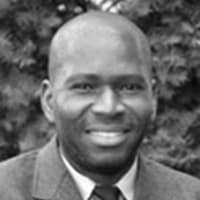
Jonas E. Alexis has degrees in mathematics and philosophy. He studied education at the graduate level. His main interests include U.S. foreign policy, the history of the Israel/Palestine conflict, and the history of ideas. He is the author of the new book Zionism vs. the West: How Talmudic Ideology is Undermining Western Culture. He teaches mathematics in South Korea.
ATTENTION READERS
We See The World From All Sides and Want YOU To Be Fully InformedIn fact, intentional disinformation is a disgraceful scourge in media today. So to assuage any possible errant incorrect information posted herein, we strongly encourage you to seek corroboration from other non-VT sources before forming an educated opinion.
About VT - Policies & Disclosures - Comment Policy



